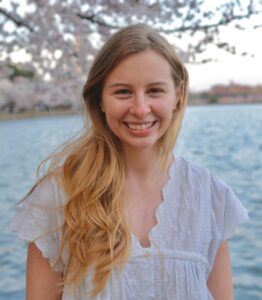“The difficulty of our time is a difficulty of the human spirit.”
These were the words that opened the Goethe Bicentennial Convocation in 1949, organized by Walter and Elizabeth Paepcke in an old silver mining town nestled in the mountains of Colorado. Now 75 years later, the seeds that were planted at this first gathering have blossomed into the Aspen Institute and its over 60 programs that drive change through dialogue, leadership, and action.
Many things have changed about the Institute, its campus in Aspen, and the big ideas that are explored at its gatherings, but what has remained is a belief in the possibilities of the human spirit and a drive to build a better world. Keep scrolling to compare scenes from recent years to moments from the Institute’s past.
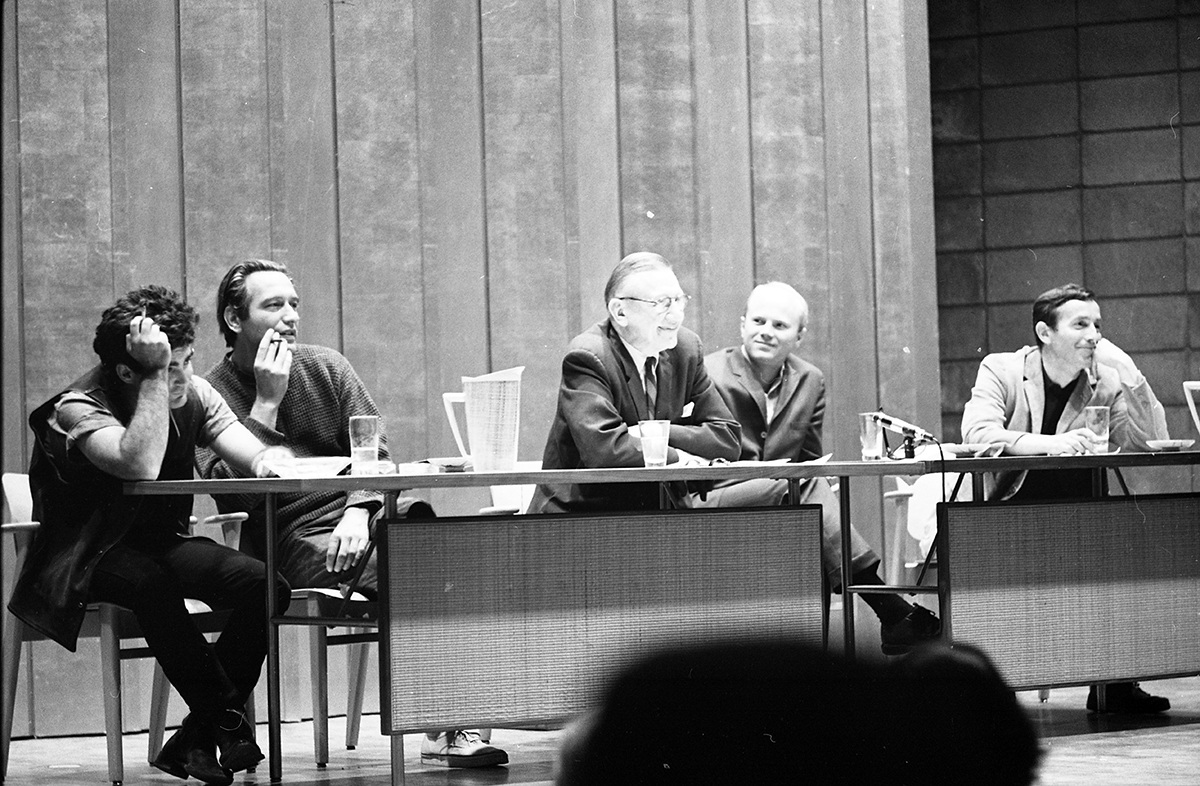

The Institute has a long history of convening some of the brightest thinkers and boldest leaders to discuss big ideas. But our stages look a bit different now than they used to, and we’re all better off for it. By bringing together thoughtful people with diverse backgrounds and points of view, we get a fuller picture of the challenges our society is facing and a more comprehensive understanding of the solutions that are being worked on.
A panel of artists-in-residence speak at the Aspen Institute in 1965. From left to right they are: Larry Poons, Allan D’Arcangelo, Alvin Eurich (head of Institute, moderator), James Rosenquist, and Friedel Dzubas. Photo courtesy of Aspen Historical Society, Aspen Illustrated News Collection. A panel of experts speak at the 2024 Aspen Ideas Festival on the subject of “Women Investing in Women.” From left to right they are: Ida Rademacher, Dalila Wilson-Scott, Brynne McNulty Rojas, and Felecia Hatcher. Photo by Nick Tininenko.
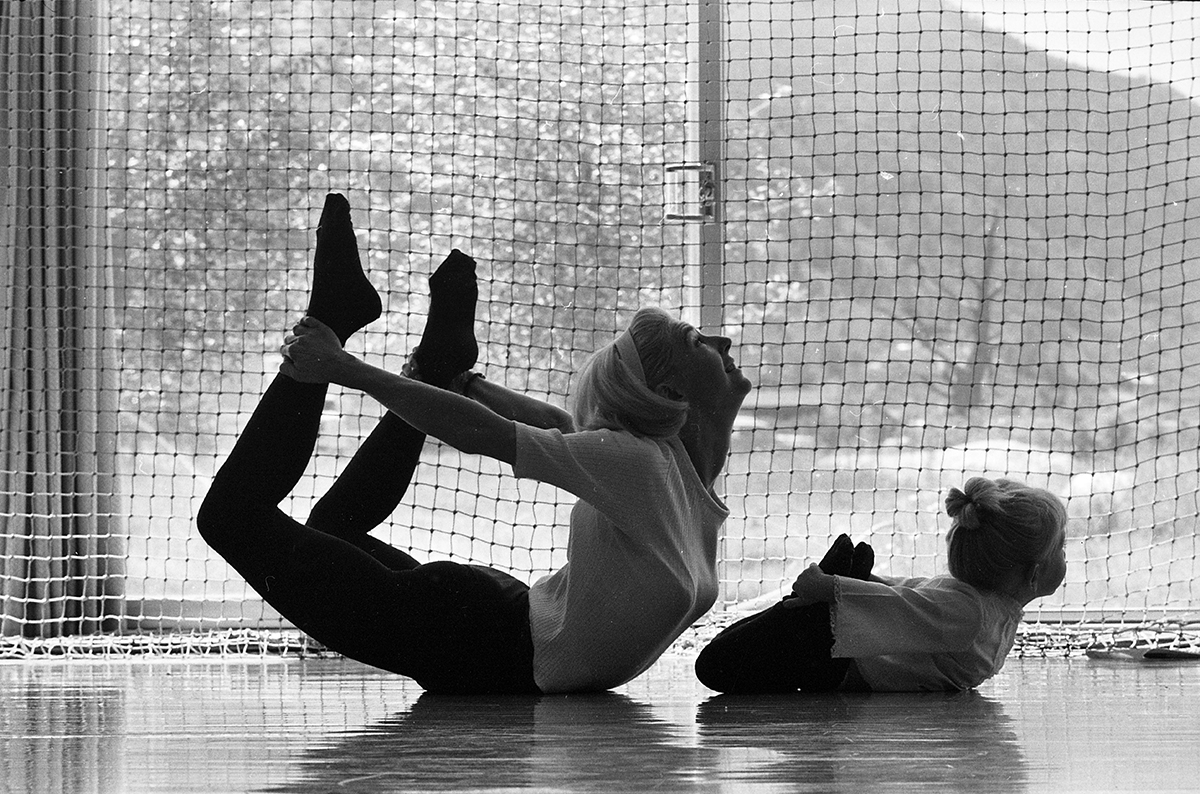

The namesake of the summer Festival, the “Aspen Idea,” refers to the integration of mind, body, and spirit. It’s therefore no surprise that activities like yoga, hiking, and birdwatching are so crucial to the Aspen Institute’s convenings even all these years later. Now in its 11th year, Aspen Ideas: Health opens the annual Festival with three days of conversations around the future of health, medicine, and science.
Yoga instructor Beth Rae does yoga poses with her 2.5 year old daughter Kathy Rae at the Aspen Institute in 1966. Photo courtesy of Aspen Historical Society, Aspen Illustrated News Collection. An attendee at the Aspen Ideas Festival in 2018 practices yoga in Anderson Park. Photo by C2 Photography.
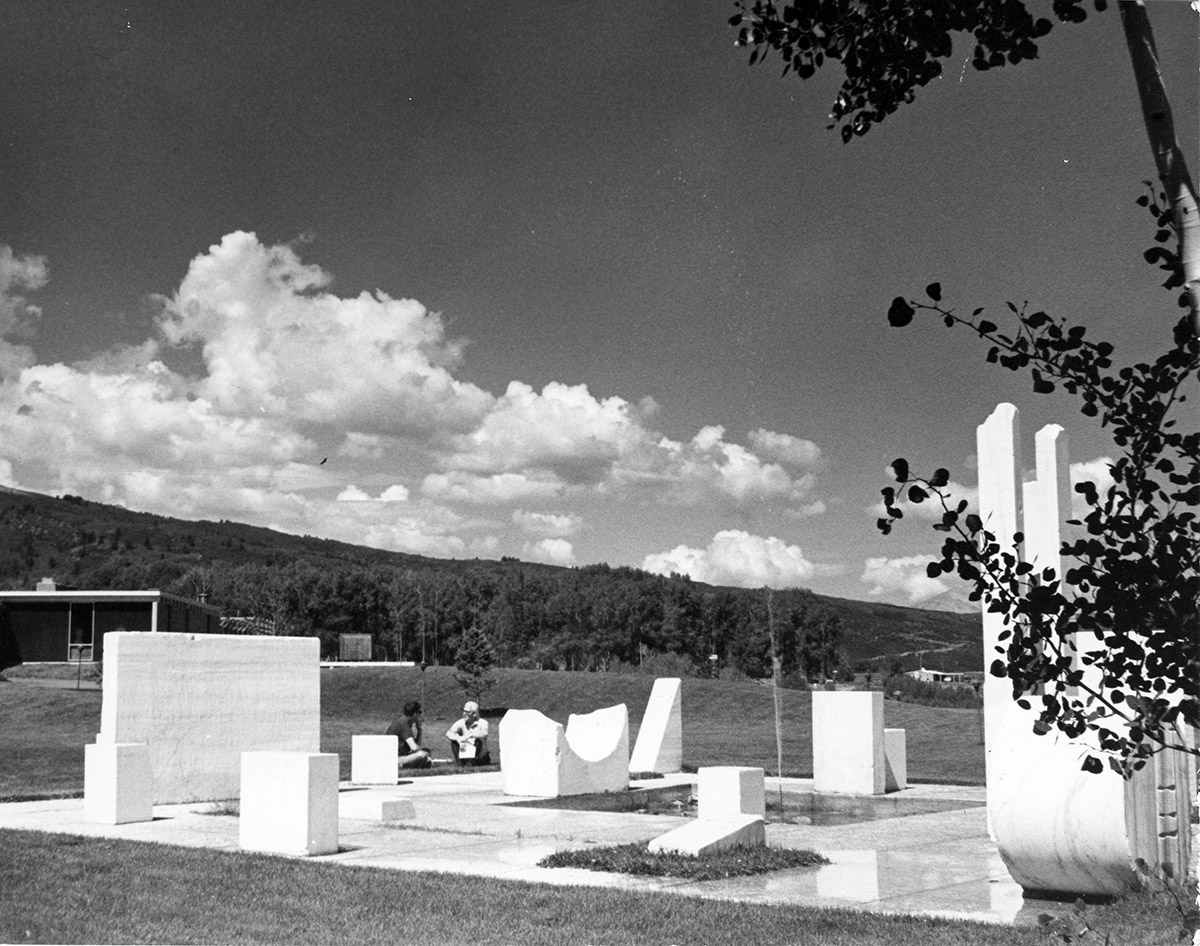
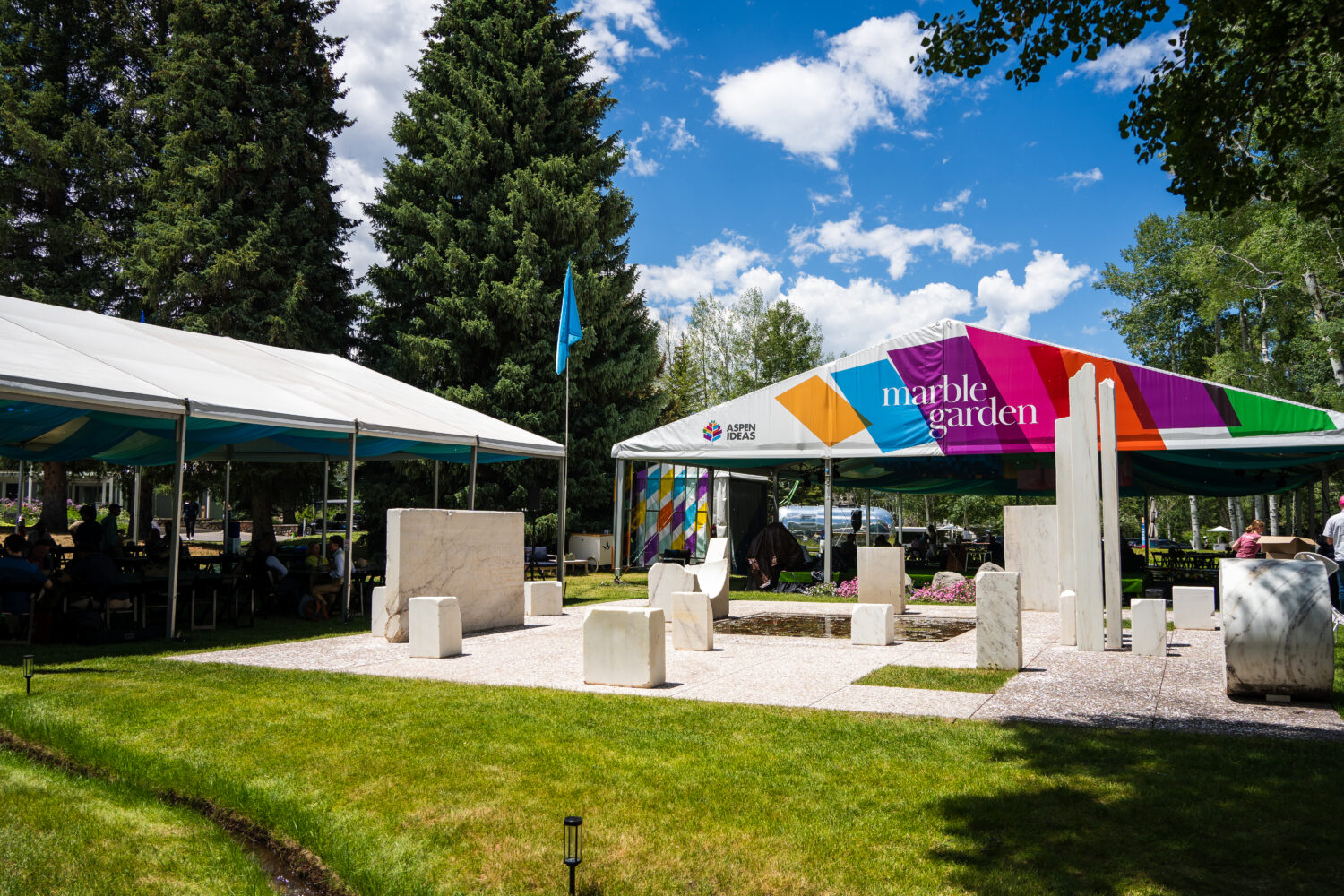
To help him transform the town of Aspen into a destination for influential thinkers, Walter Paepcke enlisted the help of artist and Bauhaus master Herbert Bayer. Bayer moved to Aspen in 1946 with his wife and designed the iconic campus of the Aspen Institute, which he created over a period of 25 years. This marble sculpture garden was designed by Bayer and installed in 1955. Today, the Aspen Institute is home to the Resnick Center for Herbert Bayer Studies, a museum and exhibition space that is free and open to the public, which preserves and honors the art of Herbert Bayer and celebrates the interdisciplinary nature of his legacy.
Aspen Institute seminar participants relax in the Marble Sculpture Garden at the Aspen Meadows. Photo courtesy of Aspen Historical Society, Durrance Collection. The marble garden remains, though its surroundings have changed quite a bit in 2024. Photo by Grace Bowie.
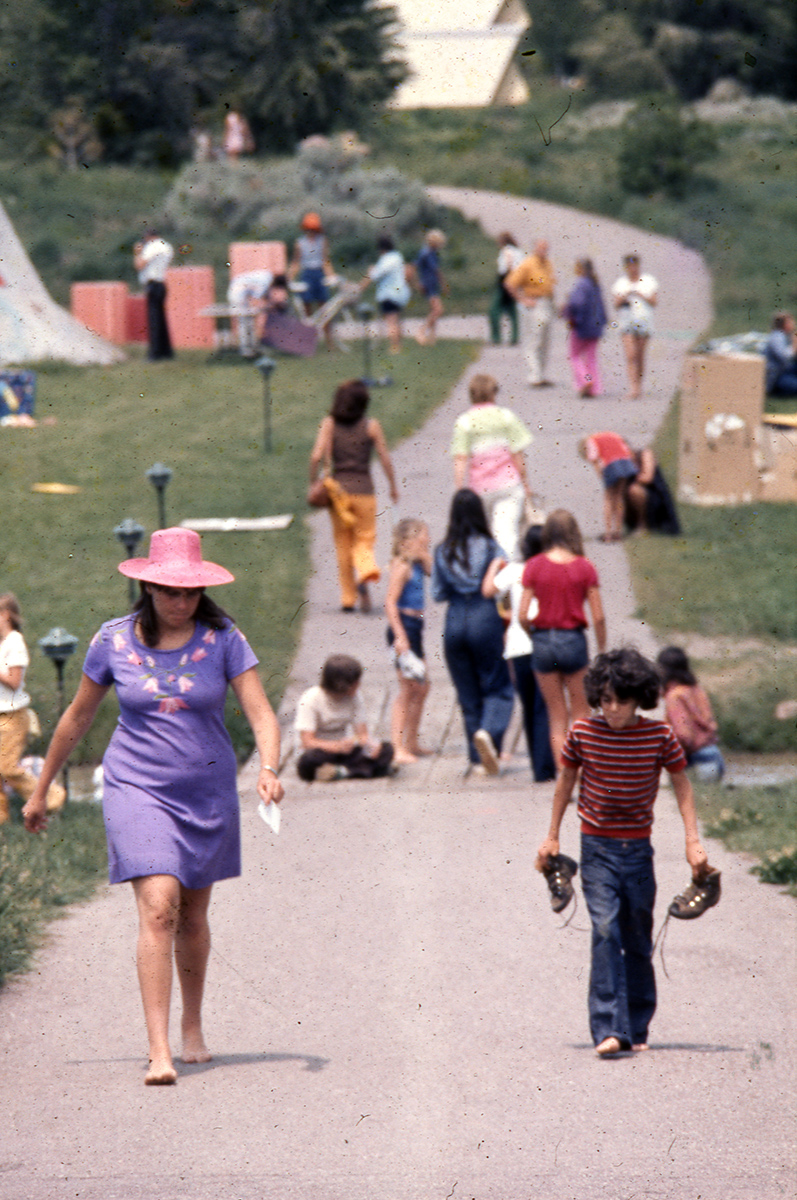
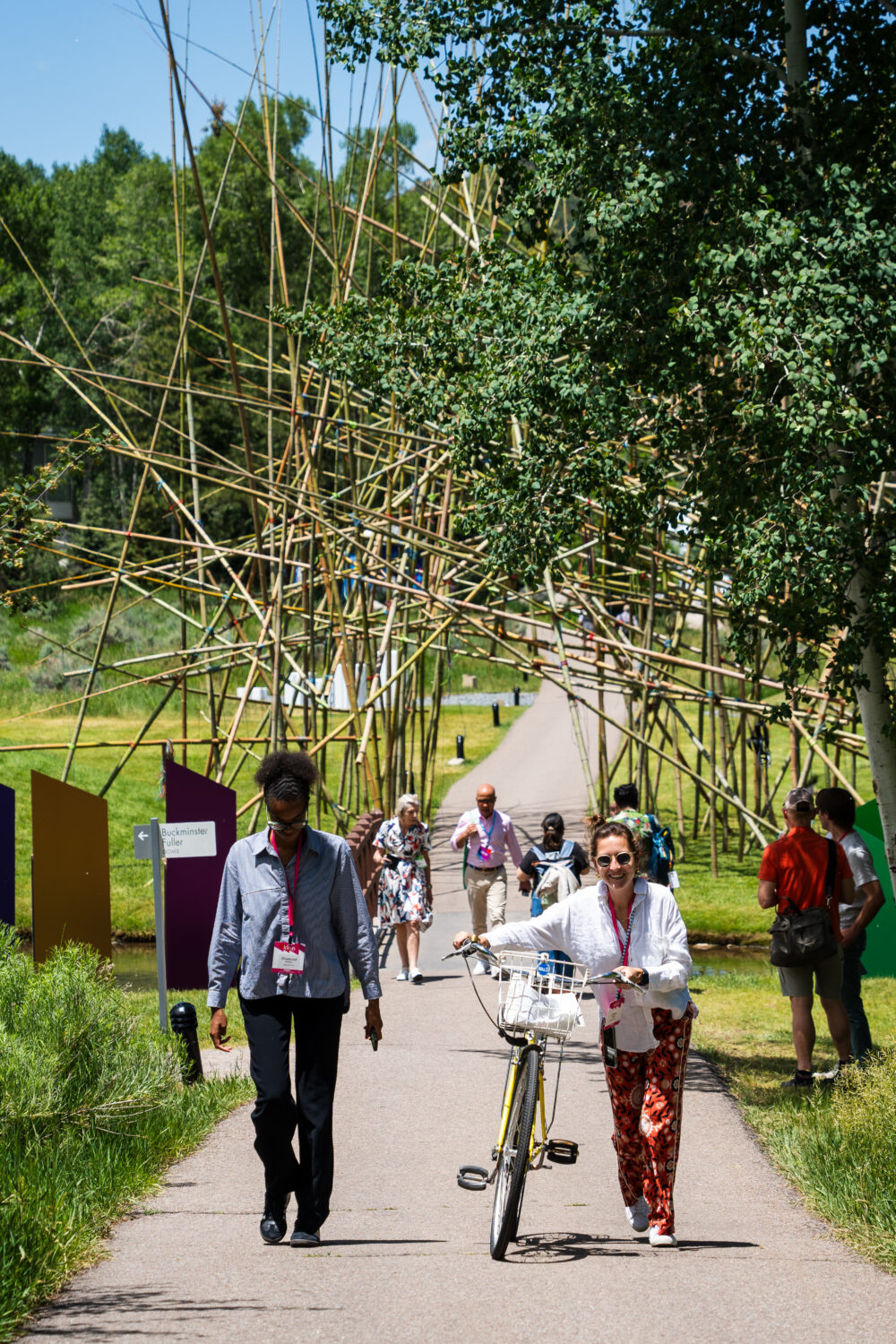
Before the iconic Aspen Ideas Festival, the Institute’s campus was home to a variety of gatherings, including the International Design Conference of Aspen (IDCA), the Aspen Photo Conference, and more. Anderson Park, seen above, has seen millions of visitors pass through it for these gatherings. The park is home to earthworks and land art pieces that were designed by Bayer in 1955, precursors to the larger earthworks movement of the 1960’s & 70’s.
Two people walk side-by-side at a children’s event at the 1974 International Design Conference of Aspen (IDCA) in Anderson Park between the Aspen Meadows and the Aspen Institute. The theme of the 1974 conference was “Between Self and System.” Photo courtesy of Aspen Historical Society. Two Aspen Institute employees stroll through Anderson Park towards the east side of campus. Behind them, the Starn Brothers’ “Will U, Won’t U” sculpture takes shape. Photo by Grace Bowie.
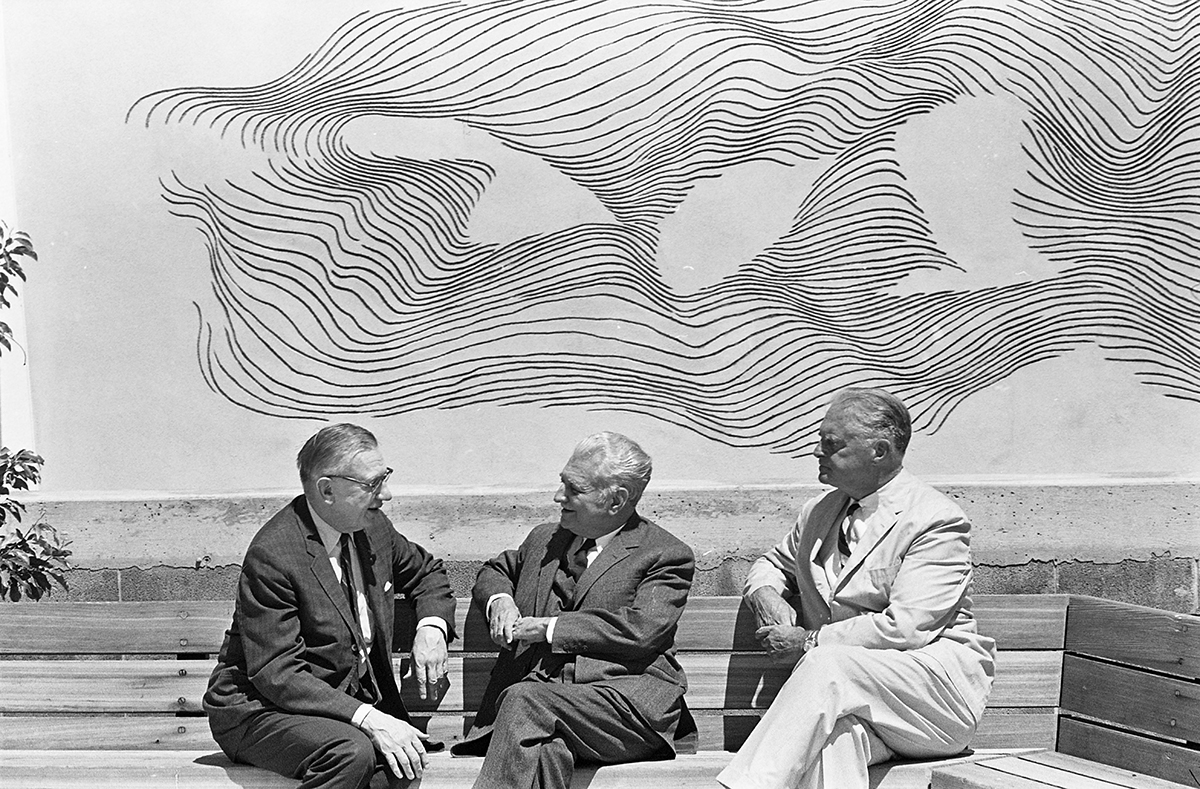

The first permanent building on the Aspen Institute campus was the seminar building, now the Koch Seminar Building. The sgraffito mural on the exterior, which remains there to this day, was a technique that Bayer had learned from mentor Wassily Kandinsky at the Bauhaus. The mural’s lines mirror the contours of nearby Red Mountain. Whether it’s William Stevenson taking over from Alvin C. Eurich as president of the Institute, or just a casual lunch-time conversation between colleagues, the sgraffito mural has been the backdrop for many moments of Aspen Institute history.
Alvin C. Eurich (left), Gilberto Freyre (center), and William Stevenson (right) sit in front of the Sgraffito Mural on the side of the Koch Seminar Building at the Aspen Meadows in 1967. Stevenson was taking over from Eurich as president of the Aspen Institute, and Freyre had been named the winner of the Aspen Award. Photo courtesy of Aspen Historical Society, Hiser Collection.Attendees converse in the shade at the 2017 Aspen Ideas Festival in front of the Sgraffito Mural. Photo by Dan Bayer.
Banner image courtesy of Aspen Historical Society, Aspen Illustrated News Collection.


